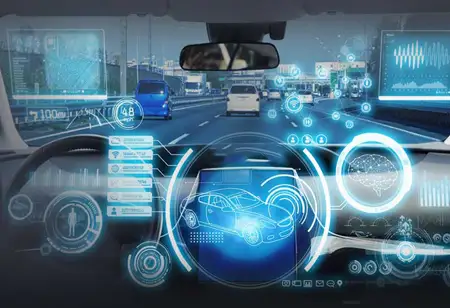Thank you for Subscribing to Auto Business Outlook Weekly Brief
Preparing for the Future of Automation
Automatic driver assistance systems (ADAS) will continue to be used more widely and quickly throughout the fleet of vehicles.

By
Auto Business Outlook | Monday, May 29, 2023
Stay ahead of the industry with exclusive feature stories on the top companies, expert insights and the latest news delivered straight to your inbox. Subscribe today.

The development and implementation of an EV plan should be pragmatic since forethought is the key to a successful future, even if the transition takes some time.
FREMONT, CA: Automatic driver assistance systems (ADAS) will continue to be used more widely and quickly throughout the fleet of vehicles. For instance, in 2022, more than 60% of new cars will have adaptive cruise control, up from 15% in the previous five years. The importance of automobiles with adaptive cruise control increased from 0% in 2015 to 12% in 2022 as a percentage of VIO. According to the body repair industry, as technology continues to permeate the VIO, it may impact collision rates and the rising use of aesthetic and smart repair services.
The necessity of ensuring that wheel alignment was reviewed and corrected to guarantee that all ADAS systems remained functional and safe, as well as the possibility to provide offerings around calibration and safety inspections. These services provide a huge upsell and revenue potential. Vehicles are being held for longer periods, contributing to a decline in the rate of auto parc scrappage, along with the scarcity of new cars available, worries about the stability of the economy, and the limited availability of new cars. Even with the weaker new car sales, the trend indicates that the number of vehicles in operation (VIO) continues to climb due to these historically low levels of scrappage. The executives we spoke with at both events didn't seem very concerned about this because it won't have an impact for another five to six years. The response we obtained was quite the reverse for their relatives in the aftersales market, which generally rely on the cars in the 1-4-year-old group.
The fleet's average age has increased from a little less than 11 years in 2012 to 12.2 years in 2022 due to cars being kept longer. The fleet's 6–13-year-old cars, already positioned for large volume growth before the current economic situation and displaying the highest yearly miles driven, represent the most significant growth area for the aftermarket. These more used cars may be in their second or third ownership cycle and are likely already a top aftermarket clientele. In the US, there are already 1.4 million electric cars (EVs), and according to a conservative projection, by 2030, there will be close to 17 million EVs on the road as the number of new models rises. Even if EVs are seeing a considerable increase in new registrations, the fleet will take years to transform. According to conservative and optimistic projections, the entire percentage of the vehicle fleet will be less than 15% in 2030.
Studies have seen consumers choose to embrace EVs earlier as a result of more states in the US considering legislation to limit new registrations to either zero- or low-emission vehicles. Recent studies, meanwhile, indicate that consumer acceptance still needs to be made more confident. Only 58% of respondents in 2022 agreed they would have considered buying a battery-electric vehicle (BEV), down from 81% in 2021. Skepticism about EV technology, costs, infrastructure, and battery technology acting as impediments cause this development.






